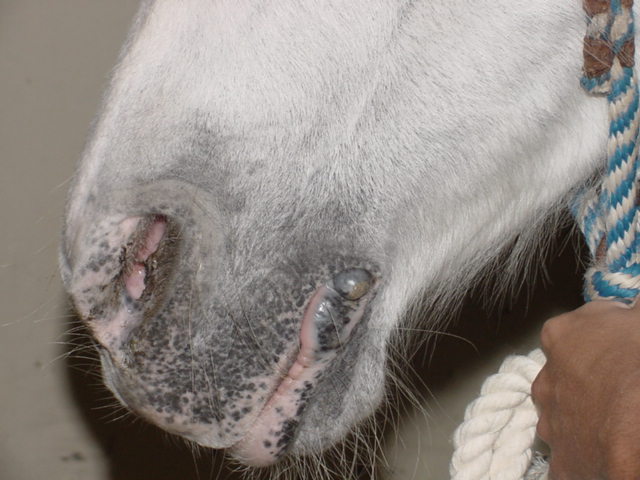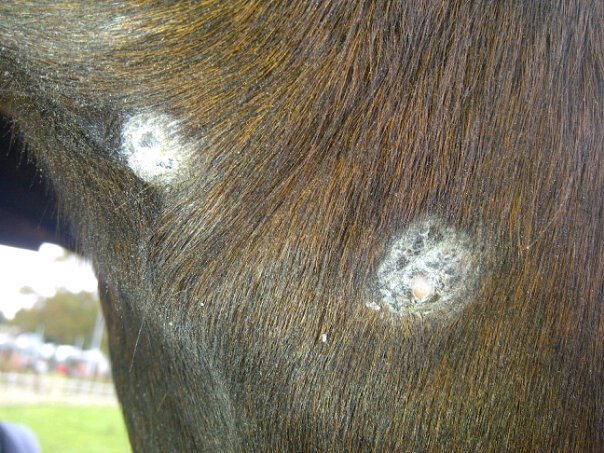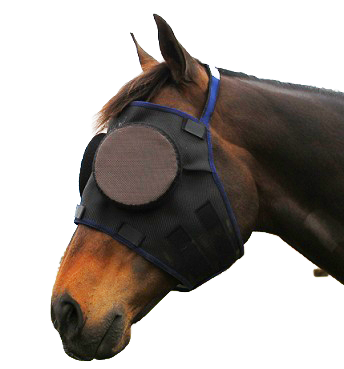While grey horses can certainly develop any skin tumor, the one most commonly found is a melanoma. Melanomas develop from the cells that produce pigment (melanocytes), which results in dark pigmented masses with the skin. The most common place for these tumors to develop is the base of the tail and the perineum, however they can also be found on the lips, eyelids, throat latch, and prepuce. You can also see them as indistinct raised patches anywhere on the body. These tumors are most often benign (don't spread to other areas) but will continue to grow over time. The masses that form in the perineum can be especially problematic if they become too large as they can block the passage of the manure.



Thanks to everyone who participated, be sure to check back next week!


















